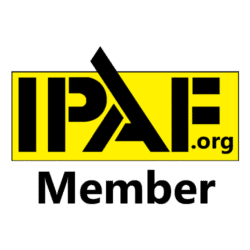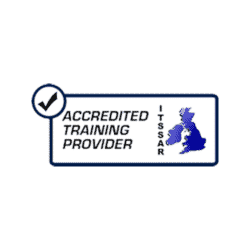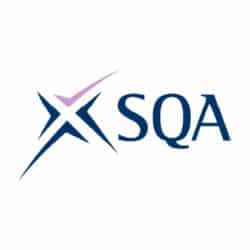Introduction and Purpose
2 Start Ltd (2 Start) is a provider of Apprenticeship and commercial, sector specific training, to the logistics sector.
2 Start provides blended provision including online training and face-to-face practical training from one of 4 sites (Portsmouth, Southampton, Worthing and Reading) in the South of England.
An integral aspect of providing a high-quality service to our directors, includes comprehensive, effective and rehearsed mitigation and management plans for situations beyond the control of 2 Start such as emergencies, disasters or disruptive events.
2 Start takes the continuity of the delivery of quality provision and continuation of business extremely seriously and is committed to dedicating an appropriate level of management, resources and planning for any instances and occurrences that may be beyond our control.
Policy Context
The policy covers the non-exhaustive lists of disasters, emergencies or disruptive events:
- Epidemics, pandemics, contagions
- Fire or explosion.
- Natural disasters, earthquakes, extreme weather conditions, storm damaged, floods.
- Security risks, cyber-attacks, terrorist attack, burglary/robbery.
- Removal from the Register of Apprenticeship Training Providers
In the event of any extreme weather conditions, disaster or emergency that is beyond the control of 2 Start all employees and learners will be safeguarded to ensure that we are able to continue with and maintain our business and contractual responsibilities.
The policy also provides for the event that 2 Start is removed from the Apprenticeship Provider & Assessment Register (APAR) and is no longer able to deliver apprenticeships.
All references to “learners” below should be recognised as pertaining to “apprentices” and vice versa.
This policy includes all training provision provided by 2 Start.
Policy Aims and Objectives
This policy aims to maintain the quality of provision during and after disruptive events.
This will be achieved by:
- Creating a culture of preparedness for such events.
- Having clearly defined areas of responsibility during such events.
- Having clearly outlined considerations during such events.
- Rehearsing procedures for all such events.
- Scenario Planning and risk assessing.
- Providing training to all relevant instructors around this policy.
- Promoting this policy to all Directors and relevant staff.
- Continually maintain the relevance of this policy.
- Ensuring continuity and quality of provision and continuous access to learning resources in the event 2 Start is removed from APAR.
- Ensuring continuous access to programmes of learning, learning resources and learner portfolios during and after any disruptive event.
Business Continuity Planning
Where a prospective disruptive event is identified as posing a significant risk to the operational processes of the organisation, a Business Continuity Plan will be created. This will be regularly reviewed and monitored by the Board.
Each Business Continuity Plan will be distributed to all personnel and saved on the Safetynet site. Where appropriate, copies will be provided to emergency personnel.
Responsibilities
2 Start has identified the importance of a consistent approach to disruptive events and confirmed that Paul Moon, Managing Director will have overall responsibility for Disaster Recovery and Business Continuity Plans.
Paul will be supported by the Board of Directors to ensure that in the event of a disaster, emergency or disruptive event, that this policy and procedure is implemented. In this situation, the Board will be referred to as the Senior Disaster Recovery Team (SDRT).
The Board, will have the following overall accountabilities:
- All aspects of the health and safety of all stakeholders.
- The notification of disruptive events, impacts to working arrangements and delivery practices, and communication to stakeholders.
- All resource considerations including people resource, additional premises and the transportation of learners.
It is expected, that in the event of a disaster, emergency or disruptive event, that personnel will remain committed to the quality of the provision, a high level of customer service and be receptive and open to any changes to the operating procedures of the business.
Considerations for Business Continuity Planning
When developing a Business Continuity Plan for a specific risk, the following considerations should be given:
Safety Considerations
RISK TO LIFE: is there risk posed to life, health and wellbeing of all stakeholders and whether it is appropriate to continue to trade through the disruptive event.
ALTERNATE DELIVERY LOCATIONS: Given the geographical spread of 2 Start sites, it is unlikely that all 2 Start facilities will be non-operational at the same time, save for a criminal endeavour. The plan should determine whether any 2 Start site, department or building needs to be evacuated or closed.
2 Start currently uses the following premises as head office:
Unit 4 Shawcross Industrial Park, Ackworth Road, Hilsea, Portsmouth, England, PO3 5HU
2 Start has alternate premises as follows:
Unit 2, Four Dells Farm, Poles Ln, Otterbourne, Winchester, SO21 2DY
Youngs Industrial Estate, Unit 32 Paices Hill, Aldermaston, Reading, RG7 4PW
Site C The Quarry, Deans Copse Road, Theale, RG7 4GZ
The Vinery Industrial Estate, Arundel BN18 9PY
It may be more appropriate to consider alternate delivery locations local to the individual region affected. The SDRT will have accountability for making the appropriate decision.
EMERGENCY SERVICES: The plan will determine whether there is a requirement of emergency services or external support.
LOCATIONS OF DIRECTORS: The plan should determine the locations of all employees, contractors, volunteers, learners, apprentices and visitors in relation to the disruptive event.
Communication Considerations
NOTIFICATION: when, where and how notification of the disruptive event should be considered by in the plan.
OPERATIONAL DISRUPTIONS: The plan should consider whether there will be any disruptions to normal working practices/ delivery schedules and how these should be communicated to the Directors. This should include assigning responsibility for continual updates.
THIRD PARTIES: The plan should consider whether third parties, including Funding Agencies and Local Authorities need to be updated on the situation.
Resource Considerations
ALTERNATE DELIVERY LOCATIONS: Given the geographical spread of 2 Start sites, it is unlikely that all 2 Start facilities will be non-operational at the same time, save for a criminal endeavour. The plan should determine whether any 2 Start site, department or building needs to be evacuated or closed.
2 Start currently uses the following premises as head office:
Unit 4 Shawcross Industrial Park, Ackworth Road, Hilsea, Portsmouth, England, PO3 5HU
2 Start has alternate premises as follows:
Unit 2, Four Dells Farm, Poles Ln, Otterbourne, Winchester, SO21 2DY
Youngs Industrial Estate, Unit 32 Paices Hill, Aldermaston, Reading, RG7 4PW
Site C The Quarry, Deans Copse Road, Theale, RG7 4GZ
The Vinery Industrial Estate, Arundel BN18 9PY
It may be more appropriate to consider alternate delivery locations local to the individual region affected. The SDRT will have accountability for making the appropriate decision.
TRANSPORTATION OF APPRENTICES: where the location of delivered is altered, the plan must arrange for the transport of apprentices to the new location of delivery, at no cost to the apprentice or employer. In such circumstances, 2 Start will ensure that apprentices are safeguarding against harm, exploitation, discrimination and radicalisation, in accordance with the 2 Start Safeguarding, Prevent and Radicalisation Policy. The distance to an alternate location must not be unreasonable and adversely affect the apprentice’s day of learning. 2 Start will be mindful to the age of the apprentices and the times of proposed delivery.
ACCESS TO PORTFOLIOS: The plan will consider the continuity of access to portfolios and learning apparatus. Access should be guaranteed for all learners and apprentices.
ACCESS TO RESOURCES AND LEARNING MATERIALS: The plan will consider the continuity of access to resources and materials. Access should be guaranteed for all learners and apprentices.
Control Considerations
DECISION MAKING: The plan should consider whether mechanisms of decision making are required.
BOARD MEETINGS: The plan should consider the method and frequency of Board Meetings during the disruptive event.
TRIANGULATION: The plan should consider what information and how it will reach the Board to facilitate decision making.
Contents of Business Continuity Plans
Whilst each emergency, disaster or disruptive event will require the prioritisation of different business aspects, the following as a minimum should be included in each plan:
- An Executive Summary
- BCP Contents Page including plan title
- Aim and objectives of the BCP
- Record of key personnel to include Directors and managers and their accountabilities and responsibilities
- A summary of key considerations; safety resources communication and control
- Call out arrangements for key personnel and their contact details
- Whether liaison with local emergency services is required and their contact details
- Whether liaison with funding partners, referral partners or awarding bodies is required, and their details
- Instructions on how to implement the plan o Alternative building arrangements and room occupancy plans o Details of transport arrangements for apprentices to alternate premises o Recovery plans for data/ HR/ Finance o Maintenance of data security o Details of quality alternative providers of similar provision and their contact details
- List of key vulnerabilities identified by Risk Assessment and Risk Profile.
- List of key contacts, including:
- Essential internal personnel to include managers and Directors.
- Essential external contacts to include funding partners, awarding organisations.
- Emergency services o Operations employees, client contacts. o Hospitals and General Practitioners. o Utilities and service provides, IT hosts, data management systems hosts. o ESFA and Local Authority
Key Contacts for Planning Purposes
British Computer Society (BCS)
City and Guilds
NCFE/ CACHE
Contact Us – NCFE Customer Service | NCFE | NCFE
Edexcel
Exam Officers | Pearson qualifications
ESFA
Kelly Etwell
Worthing Hospital – 01903 205111
Queen Alexander Hospital – Portsmouth 02392286000
Southampton General Hospital 02380777222
Southampton NHS Walk-In Centre
0333 200 1820 Police – 101 (non-emergency number for reporting crime and advice
Emergencies, Disasters and Disruptive Events – Scenario Planning and General Points
Socio- Economic Disruption Including Pandemics
Since March 2020, the UK has grappled with the impacts of the Covid-19 pandemic and the disruption it has caused to the education system.
2 Start provides high – quality specialist logistics provision, from 5 sites in the South of England. 2 Start primarily trains LGV drivers and Warehouse workers, declared “key workers” during the pandemic.
Due to the practical aspects of the provision, including driving assessments completing through the DVSA, it is not possible to transfer the whole provision to online delivery. 2 Start has made every effort to safeguard learners and apprentices during this period and sought a blended approach to delivery where appropriate. This has mainly resulted in theoretical training being completed in an online classroom environment, or in a one-to-one virtual context. 2 Start is fully prepared and conversant with online delivery.
Practical training and assessments have been completed face-to-face, although with significantly reduced class sizes. All measures to protect learners and apprentices during this training have been taken. This includes but is not limited to, the implementation of rigorous cleaning processes, increasing ventilation in training facilities including warehouses, the use of facial protection and social distancing as and when necessary and advised by Health Officials.
2 Start continues to commit to follow Government guidance, DVSA guidance and those of the respective awarding bodies, at all times.
The key points below outline actions 2 Start has taken to protect its employees, apprentices and employers of apprentices during the pandemic, but which may also be implemented in the event of any other major disruption to our provision.
Protecting our People
- The Board of Directors meet on a regular basis – where possible using conferencing software facilities – to review the situation and updated guidance and amend the business strategy and operations appropriately. The Board also considers quality of education data and evidence and monitors the impact of protective measures on the quality of the provision.
- Employees, Learners and Apprentices are advised to follow Government Advice regarding self-isolation and safety at all times.
- PPE, in line with government requirements and guidance is provided to personnel and apprentices, including sanitiser, protective eyewear and face masks.
- Options for the remote delivery of apprenticeship teaching and assessment, where possible, are in place and available to ensure minimal social contact with apprentices, staff and employers as per Government Guidance whilst minimising disruption to the Apprentices’ programme of learning
- Options for Home Working for personnel have been implemented where possible.
- The sequencing of programmes has been considered where appropriate to minimise the impact of lockdowns on the programme of study.
Ensuring Continuity for our Apprentices & Employers
Remote delivery options for nonpractical aspects of the curriculum will be implemented to facilitate learning and assessment activity and to ensure continuity of learning for all apprentices and Employers. Apprentices work is stored in a secure online location which only the learner, assessor and IQA can access. 2 Start is working with Awarding Body organisations that facilitate remote/ online assessment wherever possible, including for Functional Skills and ADR examinations.
Remote access to learner portfolios is provided.
Changes to operations affecting learners and apprentices are regularly provided via, 2 Start social media platforms, telephone and email.
Where remote delivery and assessment is conducted, quality assurance is in line with awarding body requirements. Inevitably, this includes the use of Learner Declarations and the audit record of these elements. Assessors participate in regular CPD in this area to ensure quality standards are achieved and maintained.
Work sampling will take place remotely where possible and the use of digital/ electronic signatures will be used in line with funding rules.
For non-practical assessments, alternative arrangements for assessments (such as online exams) put in place by Awarding Bodies will be implemented to allow for minimal disruption to Apprentices’ programmes of learning. 2 Start will follow awarding body requirements at all times.
Access to online learning materials and resources is given to all apprentices as required to allow them to continue their learning in line with their originally planned schedule.
Apprentices without access to technology are supported at our Otterbourne depot where a computer is made available or an agreement to use a workplace computer has been made between the learner and the employer/manager.
The sequencing of curriculums will be reviewed by the Senior Disaster Response Team (SDRT) to bring forward any activity that can be better facilitated via remote learning platforms (for example, bringing forward the teaching of theory in place of planned workplace observations) to ensure that where possible the duration of study is not prolonged unnecessarily.
The (SDRT) will work in collaboration with Awarding Bodies, EPAOs and employers of apprentices to identify alternative methods of assessment (for example substituting direct observation with witness testimony) where access to the apprentices’ workplaces is restricted.
People Resources
A vast network of employees has been established to mitigate any impact to the tutor to apprentice ratio as a result of a contagion or pandemic.
Information Technology Emergency
This includes:
- Power loss (partial/total – long/short term).
- Server failure or malfunction.
- Theft.
- Internet/intranet failure or malfunction.
- Fire/flood.
- National or local disaster.
- Cyber-attacks, sabotage, viruses, malware
The Initial Warning Indicators:
- Serious/intermittent computer disturbance, communications, data management systems faults and malfunctions.
- Power cuts or decreases in power to some or all areas of the buildings or offices.
- Failures in communications systems to include mobiles, landlines and emails.
Areas of the Business that may be affected
- Communications systems (internal)
- Communications and contact with all delivery staff operational in locations remote from the Company premises.
- Communications and contact with all funding partners.
- Communication and contact with all emergency services.
- Electronic communications systems, both internal and external.
- Finances, payroll, bills, invoices.
- General office work, printing, copying, data entry.
- Data management systems, learner files data.
- Alarm systems.
Alternative Methods of Communication
The primary purpose for alternative communication channels is to provide an effective means of communication in the event of a system failure.
Methods of communication shall include, but are not limited to the following:
- Company website. The website is internally managed with some aspects managed from outside agencies, allowing us to regularly update the site, ensuring updates regarding services are timely uploaded, communication channels such as change of personnel or phone numbers can also be updated.
- The Apprenticeship Manager can support all apprenticeships. She can communicate to apprentices and employers to ensure regular updates are provided where a significant change or incident has occurred. The Management Team have direct phone and email to support further communication lines.
- In the event of an email failure, IT systems will be rebooted and email downtime will be monitored, where email is not available apprentices, suppliers, staff and employers can be contacted via telephone.
- The DVSA telephone update service can be utilised.
In addition to the landline telephone line, all company directors and delivery staff have business or personal mobile telephones which can be used in emergencies. Our telephone and internet supplier can redirect calls to the alternative numbers, so that we can continue to receive and make calls using our normal telephone number. A central record of all contact numbers is provided to all stakeholders and regularly updated.
IT Systems Backups and Recovery
The primary purpose for the information technology back up system is to provide an effective disaster recovery of key networking servers to include, data management systems, email, data bases, intranet, websites, internal and external directories. Additionally, the backup system provides recovery of any file that existed on the network server long enough to be caught in regularly scheduled backup of the server by the server hosts, this takes place every 24 hours, with the exception of individual emails. The backup system is not an archival system for storing information off-line for an indefinite period of time and is not set up to recover individual email messages.
The 2 Start Senior Disaster Response Team will provide an appropriate and adequate contingency plan. This is necessary to minimise and risk of incidents to include unauthorised disclosure, modification, or destruction during an emergency. The plans include frequent data backup, disaster recovery and emergency mode operations.
Data backup procedures shall address, but are not limited to, all source media for the internal and external operating procedures, licenced applications, application data, and all records.
Data backup procedures shall include, but are not limited to the following:
- Users responsible for conducting backup.
- Users authorised to access backup.
- Location and identification of operating system and application source material.
- Schedules and frequency of backup.
- Locations of on-site backup storage.
- Description and location of backup logs/records.
- System storage rotation and reuse systems.
All backups shall be executed on a regular basis as defined in the system backup processes and testing procedures. All back up media will be stored in a fireproof storage device on site; all media will be replaced on a regular basis. A copy of all names, addresses, and contact details for all users and vendors who handle backup media shall be accurately documented.
Backup media will be tested regularly to ensure that it can be reliably restored – this is done on a weekly basis. Significant operational or technical changes may require additional restoration tests.
All electronic systems to include dedicated data management systems, general files stored on the network are backed up automatically every night by the server hosts/vendors.
System Backups
Scheduled backups run nightly and recover runs during operation when the system is idle.
File recovery will be to the most recent completed backup.
Scheduled backups will be one of the following:
- full back up of every file located on the server
- a consolidation backup of any file that has changed, or was created since the last full backup was undertaken,
- a backup of any file that changed or was created since the last backup performed.
A file that has been accidently deleted can only be recovered from the backup system if that file existed on the network at the time of the last back-up, the file will be recovered in the state it was in at the time of the last backup.
Removal from the Register of Apprenticeship Training Providers or Other Similar Event
Notwithstanding 2 Starts rigorous high standards of provision, 2 Start is keen to ensure the business is prepared for all eventualities, including the prospect of 2 Starts removal from the Register of Apprenticeship Training Providers.
In the event of removal, 2 Start is fully committed to complying with the EFSA, OFSTED and any other regulatory body to maintain, with minimal disruption, the learning journey of all learners and apprentices. This includes all support required to transfer learners and apprentices to a different training provider to complete their programmes.
Transfers will be led by the Managing Director and Apprenticeship Manager and supported by departmental managers.
Continuous access to portfolios and resources will be provided until learners are fully transferred.
Promotion of This Policy
This policy will be promoted by the organisation via the following methods:
- During a comprehensive induction for learners, apprentices and personnel.
- By engaging in regular risk assessment that includes relevant department managers and personnel.
- Discussing continuity plans during employer engagement.
- Strong engagement processes during the execution of a Business Continuity Plan.
- A comprehensive and continuous review process during the execution of a Business Continuity Plan.
- Apprentices and employers of apprentices will be made aware of the elements of the Business Continuity Plan that directly affect them as soon as is reasonably possible.
- By conducted regular “we have learned” events.
Engaging and Training Employees and Apprentices in implementation of this Policy
Appropriate training and coaching will be provided to assist with implementation of any measures outlined in the Business Continuity Policy once completed.
Apprentices and employers of apprentices will be made aware of alternative arrangements in place via online channels, social media, telephone and/or the 2 Start website as appropriate.
Apprentices, staff and employers of apprentices will be updated regularly as to the progress of the Business Continuity Plan and any further changes to provision that may affect them.
All personnel will be trained in this policy as part of a comprehensive induction.
Business continuity planning will be discussed regularly at meetings led by the Board.
Monitoring and Review
The Senior Leadership Team will be responsible for monitoring and reviewing the Policy. As a minimum the policy will be reviewed annually.
In the event of the Senior Disaster Response Team invoking a Business Continuity Plan, regular review points will be agreed to monitor the effectiveness and appropriateness of the plan to ensure that any major incidents are dealt with in the best possible way to protect both our staff and learner populations.
Last updated: 13/05/2025
Date of next review: 13/05/2026
Reviewed by: Caroline Moon (Compliance Director)










